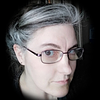Take a photo of a barcode or cover

erebus53 's review for:
Divergent Mind: Thriving in a World That Wasn't Designed for You
by Jenara Nerenberg
hopeful
informative
reflective
Again, I am not really the target audience for this. I think this book is a valuable resource as is comprises quite a few resources, but I see nothing new here as I am already familiar with the content of this book. If you are just starting this journey then it may be a valuable jumping off point.
The focus in this book is from the lens of Adult Neurodivergent women (and generally women who have only understood their differences later in life, typically when struggling to manage work life, marriage, or when raising a child who is diagnosed with their own challenges). It has good info on ADD, Autism/Asperger's, Synaesthesia, Sensory Processing Differences, and mentions in passing, other divergences such as Bipolar, Dyslexia, Dyspraxia and Schizophrenia. There is a reality check and some clarification about the clinical diagnosis of "mental illnesses".
The information in the book is relatable and so I think it's pretty reliable. For each of the things mentioned in the book I am reminded of a person I know.. (not all the same person!), and the anecdotes that the author relates back up my personal experiences and the stories I have heard from my Neurodivergent friends, family and networks.
There are a few resources that have been mentioned or summarised in this text, including a shortened version of Samantha Craft's Asperger checklist for Women. I suggest doing a web-search for it if you want the full checklist.
The book also addresses the quandary of "to Label or not to Label", as Rights advocates want to destigmatise difference, people crave the input of others like them, and there is the need to jump through regulatory hoops to get funding for needs assessments and supports. There is specific mention and critique of the diagnostic manual (DSM), such as the fact that it's a tool and not set in stone. It can be useful for a sense of closure or understanding, community organisation, Identity and strategies for thriving, but is also mutable, ever changing and far from set in stone. We can expect the words, and ways we look at minds, sensory needs and differences, to change in the advent of new technologies and philosophies.
The focus in this book is from the lens of Adult Neurodivergent women (and generally women who have only understood their differences later in life, typically when struggling to manage work life, marriage, or when raising a child who is diagnosed with their own challenges). It has good info on ADD, Autism/Asperger's, Synaesthesia, Sensory Processing Differences, and mentions in passing, other divergences such as Bipolar, Dyslexia, Dyspraxia and Schizophrenia. There is a reality check and some clarification about the clinical diagnosis of "mental illnesses".
The information in the book is relatable and so I think it's pretty reliable. For each of the things mentioned in the book I am reminded of a person I know.. (not all the same person!), and the anecdotes that the author relates back up my personal experiences and the stories I have heard from my Neurodivergent friends, family and networks.
There are a few resources that have been mentioned or summarised in this text, including a shortened version of Samantha Craft's Asperger checklist for Women. I suggest doing a web-search for it if you want the full checklist.
The book also addresses the quandary of "to Label or not to Label", as Rights advocates want to destigmatise difference, people crave the input of others like them, and there is the need to jump through regulatory hoops to get funding for needs assessments and supports. There is specific mention and critique of the diagnostic manual (DSM), such as the fact that it's a tool and not set in stone. It can be useful for a sense of closure or understanding, community organisation, Identity and strategies for thriving, but is also mutable, ever changing and far from set in stone. We can expect the words, and ways we look at minds, sensory needs and differences, to change in the advent of new technologies and philosophies.